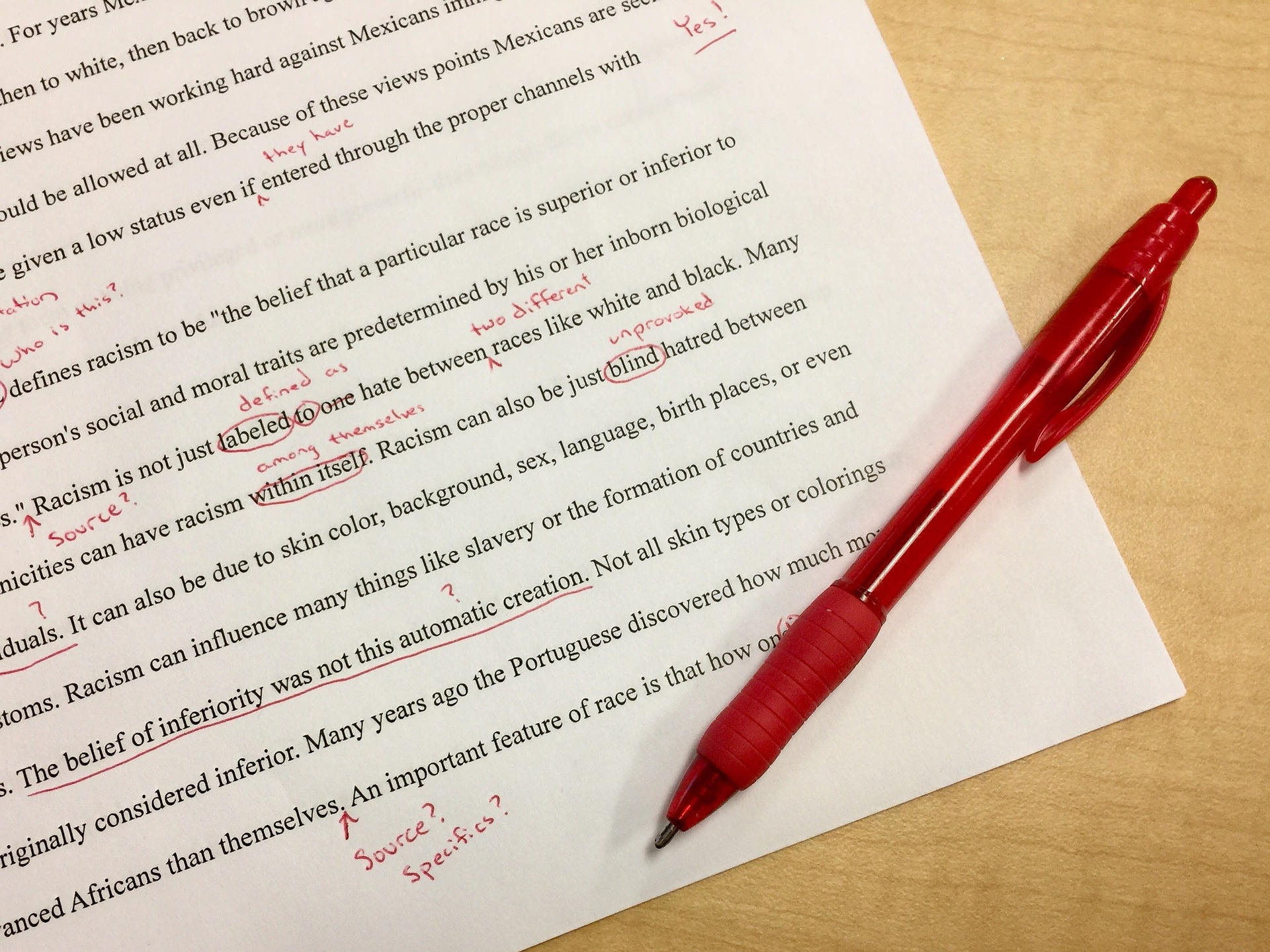by Erica Vetsch, @EricaVetsch
Macro edits, micro edits, line edits, proofreading edits, galley edits, developmental edit, copy edits, substantive edits, structural edits. Gak! What are they? Why are there so many different kinds of edits? Are all these roses the same, but with different names?
There are basically three categories of edits a book goes through, and there may be several rounds of edits in each category. Let’s unpack the different categories, what you might expect when they arrive, and how to get through them with your emotions and your manuscript intact.
1. Macro or Developmental Edits. (Also known as Substantive or Structural Edits)
A. What they are – A macro edit of your manuscript involves the big-picture items such as setting, timeline, characterization, plot, story structure, pacing, presentation, marketability, continuity, consistency. This is where your editor will point out that the spiritual thread disappears in chapter six and doesn’t reappear until the last chapter. Or, that the hero started out as a perfectionist type-A personality, but halfway through, he turns into a relaxed, easy-going reactionary man, for no apparent reason.
B. What to expect – Most editors will send an editorial letter (email) pointing out the big-picture items that need attention. The best editors will also send along some solutions to help jump-start your ideas in how to make the changes. Occasionally, the editor will want to speak to you via phone or Skype to go over the edits requested. Your editor might use Track Changes in your Word Document to point out specific areas or instances, or they may rely only upon that editorial letter. Each editor is different, and you’ll come to learn how they and you communicate best.
C. How to Deal with Macros – First, read the ENTIRE editorial letter. Then, and this is IMPORTANT, walk away. Shut your computer, get up from your desk, and physically get some distance on the edits. If you’re like me, you want to dive in right away and FIX it all, but if you’ll give yourself some grace time to think, process, and react emotionally to the edits, you’ll be in a much better frame of mind when it comes time to actually do the work. When you sit down again to begin the edits, don’t try to eat the elephant all at once. Go through the manuscript making one change at a time. Also, don’t be afraid to ask for clarification and/or help from your editor. If the story sags a bit in the middle, and the editor says tighten it up, he/she may have some suggestions about how to do it. Communication is key. Just make sure that you are in a polite, kind frame of mind when you have your talk. Don’t be belligerent or obstructive. Be ready to learn and open to ideas. Remember, your editor is on your side, and you have the same Goal: Make the Story as Strong and Appealing to Readers as Possible!
2. Line Edits/Copy Edits (Also known as Micro Edits)
A. What they are – A line editor is a special person. They have a fantastic grasp of grammar and punctuation, an eye for detail, and a passion for words. The line editor will go through your manuscript, line by line, checking for word usage, consistency, punctuation and grammar issues, lingering plot holes, repetitive words or phrases, and so much more. A good line editor will take a good manuscript and make it a great manuscript. They will also bring your story into conformity with the particular publishing house’s preferred style.
B. What to expect – Expect a VERY MARKED UP MANUSCRIPT. Don’t panic! Most of the edits will be minor, removing a comma, inserting a comma, removing ellipses and em dashes (This happens to me a lot because I LOVE a good em dash!) Other changes might be the discovery of a particular dialogue tag or phrase or word that you’ve used liberally. For me, every manuscript has a different favorite words that gets overused, and I don’t even notice it. The line editor will see these and give you the opportunity to change them.
C. How to Deal with Micro/Line edits – Be prepared to take your time. Don’t work on them if you’re distracted or in a noisy/busy place. You need to pay attention to detail, and you need to focus. Line edits don’t have quite the same emotional impact as macro/developmental edits, so they probably won’t rock your world as much. Communication is key here, too. There might very well be some back and forth with line edits, but probably not as much as with macros.
3. Proofreading/Galley edits
A. What they are – Galley edits/proofreading edits arrive last in the process. This is where you have one last chance to catch and change small errors or make small adjustments to the manuscript. It is NOT the place to remove or add a subplot or character or delete chapters. You will not be the only one proofreading the galleys, hopefully. You may receive one last email or communication to iron out the last few bumps.
B. What to expect – Expect to see your book’s interior layout. Galley proofs are a PDF copy of your book, with each page depicted exactly as it will be printed. Page numbers, headers, chapter breaks, dingbats (The fancy artwork that goes between scenes to indicate a break.) In most instances, you won’t make the changes directly into the document. You’ll indicate in a separate document the page number, paragraph, and change. Some publishers want you to work on a hard copy of your book at this point, because sometimes it’s easier to see needed changes on paper rather than on the screen. Each publisher is different, and they’ll be clear with their instructions. If you’re unsure exactly what they want, ASK! Communication is key!
C. How to Deal with Proofreading/Galley Edits – On the one hand, this one is pretty easy. The book is finished, the edits have been approved, and you’re just looking for tiny things that might need altering. It’s very exciting to see the interior of your book, including the copyright page, title page, dedication, etc. As with line edits, make sure you have a block of time, are ready to pay attention to details, and have a clear idea of the format and way the publisher wants you to address any changes to the galleys.
One final word on the editorial process. Please remember this: The goal of each of the editors—developmental, line, and proofreading—is to make your manuscript the BEST it can be. The edits are never personal attacks on you or your work. You and your editors are all on the same team. Communication is essential to getting through the editorial process easily. When communicating with your editor, be kind, be clear, be professional.
Also, be complimentary. You love it when an editor says, “Wow, I love this description!” Or “I wish I had written this, it’s beautiful!” So, return the favor. Tell you editor how much you appreciate their hard work, tell them you appreciate their sharp eye for detail. Tell them your book wouldn’t be nearly as good without their help.
If you’ll follow those suggestions, you’ll love the editorial process as much as I do!
He’s doing what he can to save the Prince Regent’s life . . . but can he save his new marriage as well?
Evan Eldridge never meant to be a war hero–he just wanted to fight Napoleon for the future of his country. And he certainly didn’t think that saving the life of a peer would mean being made the Earl of Whitelock. But when the life you save is dear to the Prince Regent, things can change in a hurry.
Now Evan has a new title, a manor house in shambles, and a stranger for a bride, all thrust upon him by a grateful ruler. What he doesn’t have are all his memories. Traumatized as a result of his wounds and bravery on the battlefield, Evan knows there’s something he can’t quite remember. It’s important, dangerous–and if he doesn’t recall it in time, will jeopardize not only his marriage but someone’s very life.

ERICA VETSCH can’t get enough of history, whether it’s reading, writing, or visiting historical sites. She’s currently writing another historical romance and plotting which history museum to conquer next! You can find her online at www.ericavetsch.com and on her Facebook Page where she spends WAY TOO MUCH TIME!


